
Navigating the Nuances of Audio Graphics Plotting Waveform Data & Infusing Videos with Life-Like Animations Using Premiere Pro

Navigating the Nuances of Audio Graphics: Plotting Waveform Data & Infusing Videos with Life-Like Animations Using Premiere Pro
By using waveform of the sound waves in Premiere Pro, we can better edit audio. In the following article, we’ll learn how the audio waveform auto-sync feature in Premiere Pro helps automatically align and merge clips in the Project panel, in the timeline, and when setting up a multicamera project and how to insert audio waveform on your clips using Premiere Pro.
Part 1. How to show Audio Waveform on clips in Premiere Pro? (2 ways)
Users frequently complain that the audio waveform can suddenly disappear while editing audio in Premiere Pro, which is quite annoying to deal with. In the following tutorial, I’m going to show you how to make the audio waveforms visible.
1. Click the wrench icon on settings button
If you are not seeing them on audio clips on your timeline, then you drag on an audio clip to your timeline or your sequence and just click on the wrench and check to show audio waveform.
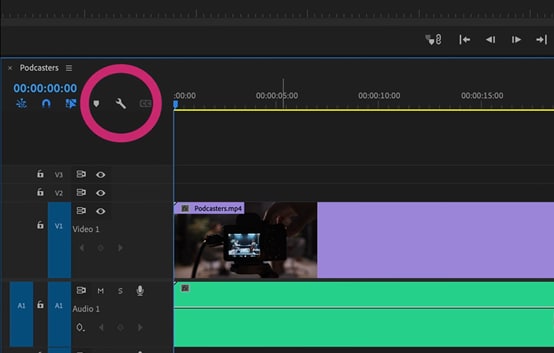
Once you check that you should see the audio waveforms on your clip you can click it again you should see a checkmark and it is highlighted in blue and if you don’t want to see them all you have to do is click it again.
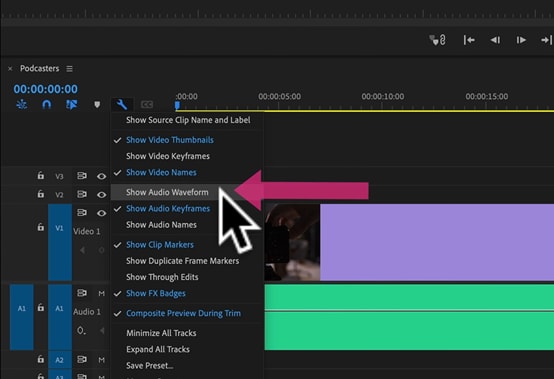
That will toggle off the audio waveforms and that is how to show the audio waveforms on your audio clips in adobe premiere pro.
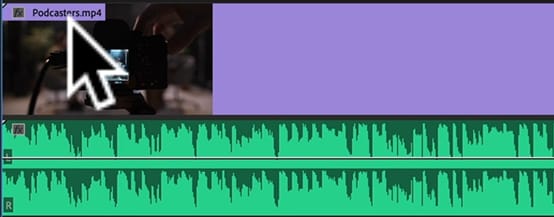
2. Automatic generate audio waveform
Make sure “Automatic audio waveform creation” is selected by going to “Edit > Preferences > Audio” first. When importing files, no waveforms are generated if option is unticked. Only clips you import moving forward will be impacted by this; clips already imported won’t be affected.
Second, for creating audio waveforms on clips that don’t have them, select the clips in the Program panel and go to “Clip > Generate Audio Waveform”.
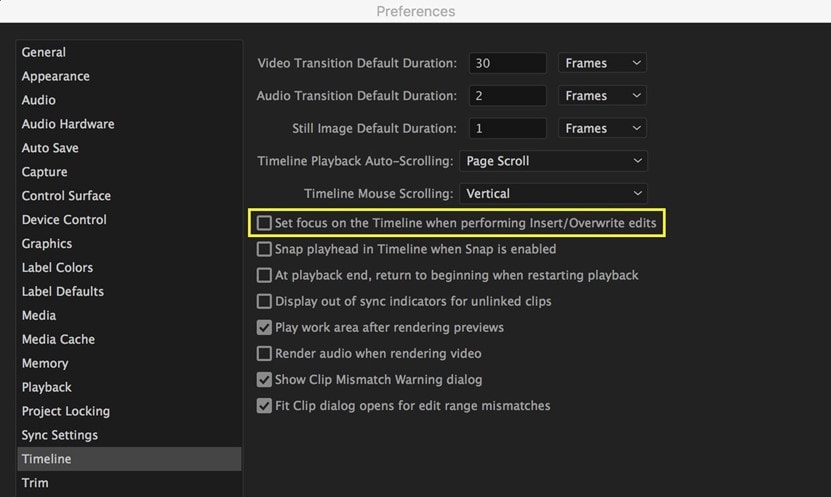
Part 2. How to add audio waveform animation in Premiere Pro?
If you want to simply add a dynamic effect to your audio, just follow the tutorial below.
Step1Click After Effects Composition
First, make sure both the video and audio are selected. Right-click and select replace with After Effects composition.
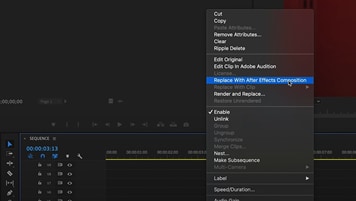
Step2Create a new solid in After Effects
After creating a new project in After Effects, you need to choose a new solid of any color in your composition.
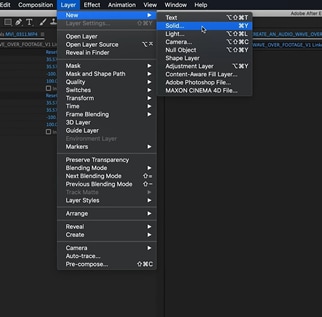
Step3Open audio waveform effect
Search audio waveform and drag and drop this effect on your solid. The waveform will now respond to the audio in your film if you use the audio layer option for your clip in the effect parameters for your solid change.
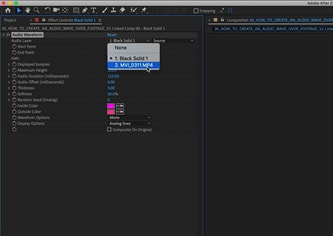
Step4Adjust the audio waveform effect
The position of the waveform on your video can be changed by utilizing the start and end point settings. Make sure the last values for each selections are the same to maintain an even level. Next, you can change the characteristics to give your waveform the desired appearance. Here, I applied some fundamental settings that are effective for singing. Using the two-color picker options and the display options, you may also change the waveform’s inner and outer colors.
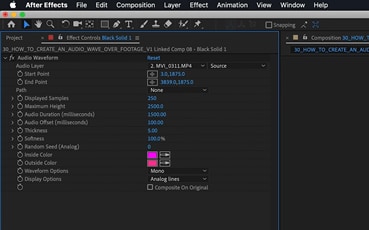
Step5Check the animation and export the video
Back in Premiere, you can pick whether you want the traditional analog lines to appear or a more contemporary digital waveform. Your clip will now be replaced with an After Effects composition that is dynamically tied to the audio waveform.
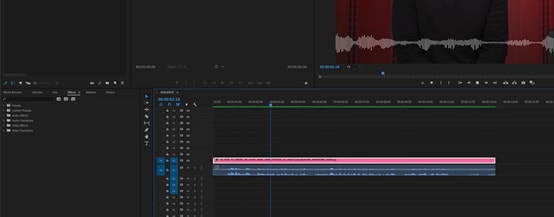
Part 3. How to change the incorrect audio waveform in Premiere Pro?
These problems typically result from corrupted cache/peak files. If you have cleared the cache from the application. I will recommend cleaning them manually by going to the location specified in “Preferences > Media Cache”.
Clean the contents of the folder named Media Cache, Media Cache files, and Peak files (Before cleaning them, please ensure to open these folders once and verify if they have any of the media files in them to avoid any accidental deletion of required media or asset).
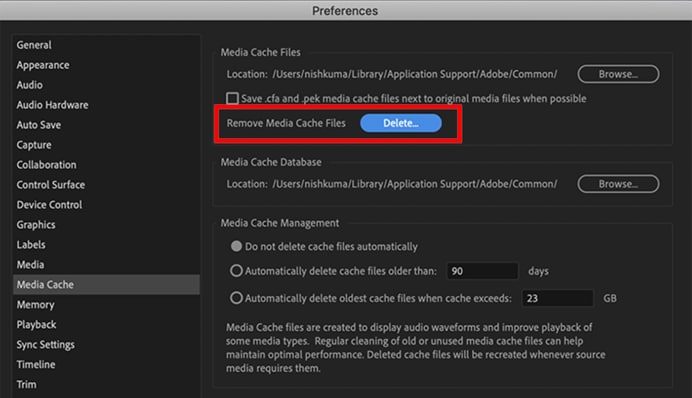
Please make sure that the option “Save.cfa and.pek cache files next to the original media files when possible” is unchecked. If it is ticked, you will have to remove them by hand from the folders where the media files are kept.
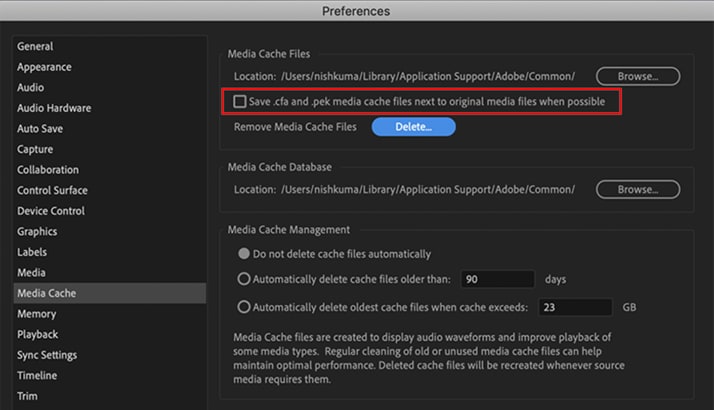
The Audio previews can also be cleaned (File > Project Settings > Scratch Disks > Audio Previews).
The following time you open the project, these files will be cleared. Rebuilding the necessary cache and peak files could take some time.
Part 4. How to add audio waveform animation to video with Premiere Pro alternative?
In reality, based on the above process, it is clear that you must use After Effects to add audio waveform animation effects in Premiere Pro. Although you can further modify the animation, this approach is very difficult for beginners to understand, and it has a high learning cost. In this situation, we strongly advise you to try Filmora Audio Visualizer . We provide more than 25 animation effects and fixed pre-made waveform elements, and you can also adjust the color and frequency in Advanced Settings. Come and give it a try!
Conclusion
This article will help you in resolving various audio waveform issues in Premiere Pro. Additionally, you can discover how to create waveforms in your audio clips. You should try Wondershare Filmora to add the waveform animation even if Premiere Pro is one of the greatest audio and video editing programs. Beginners will find it more convenient and simpler. If you simply want to quickly polish your music video or podcast video, the Filmora audio visualizer is a better option.
Free Download For Win 7 or later(64-bit)
Free Download For macOS 10.14 or later
Conclusion
This article will help you in resolving various audio waveform issues in Premiere Pro. Additionally, you can discover how to create waveforms in your audio clips. You should try Wondershare Filmora to add the waveform animation even if Premiere Pro is one of the greatest audio and video editing programs. Beginners will find it more convenient and simpler. If you simply want to quickly polish your music video or podcast video, the Filmora audio visualizer is a better option.
Free Download For Win 7 or later(64-bit)
Free Download For macOS 10.14 or later
Mastering Audio Balance in DaVinci Resolve: A Step-by-Step Guide
How To Normalize Audio In DaVinci Resolve
It happens a lot of times that we are not satisfied with several details our videos and audios contain, and we need to edit them. One of the most common problems we face is that our volumes are not normalized, and we need to take some extra time in order to achieve the best result for our audiences. Even with little or no knowledge about this very specific topic, we need to inform ourselves and find the solutions, make our videos more watch-able and our audios more listen-able, so to say.
There are several ways the audio normalization is achieved. One type is called peak normalization, helping adjust the recording based on the highest signal level present in the recording; the second is loudness normalization, adjusting the recording based on perceived loudness. RMS (Root-Mean-Square) changes the value of all the samples, where their average electrical volume overall is a specified level.
Mostly, there are two reasons why we should give audio normalization a try. You need to decide yourself, what is your reason and expected outcome when you use audio normalization. First is when your aim is to get the maximum volume, but the second boils down to matching different volumes with each other.
When it comes to normalizing audio, there are two reasons we refer to this tool. First is when we feel we need to get the maximum volume, and the second is when we need to match different volumes.
More concretely, in general, audio normalization is when a constant amount of gain is applied to the audio recording, bringing the amplitude to a desirable level, “the norm” for the project. It means that when this tool is applied to our volume, the whole recording has the same amount of gain across it, every piece affected the same way. Accordingly, when we normalize volume, the relative dynamics are not changed.
You can have the desired result using different kinds of software. Nowadays, a lot of programs offer you the tool which facilitates this process. So, one of them would be DaVinci Resolve, which we are going to discuss in this article.
What is DaVinci Resolve? The description goes: “DaVinci Resolve is the world’s only solution that combines editing, color correction, visual effects, motion graphics and audio post production all in one software tool!” so, let’s discover what this software can do to help us balance the audio!
So, how to balance your audio in DaVinci Resolve? We are going to discuss everything step by step – how to set your target loudness level, how to monitor the loudness, and how you can use the automation feature.
Well, of course, have the program installed and opened. Then, add your video with the audio you want to edit or the audio separately, if that’s what you are aiming to do.
The first step you need to make is to set your target loudness level – for this, find the little settings button on the right bottom of the program and click on it. Now, go down to the Fairlight menu and change the Target Loudness Level. If you are doing the audio normalization for the Youtube content, then it is recommended to set it to -14 LUFS.
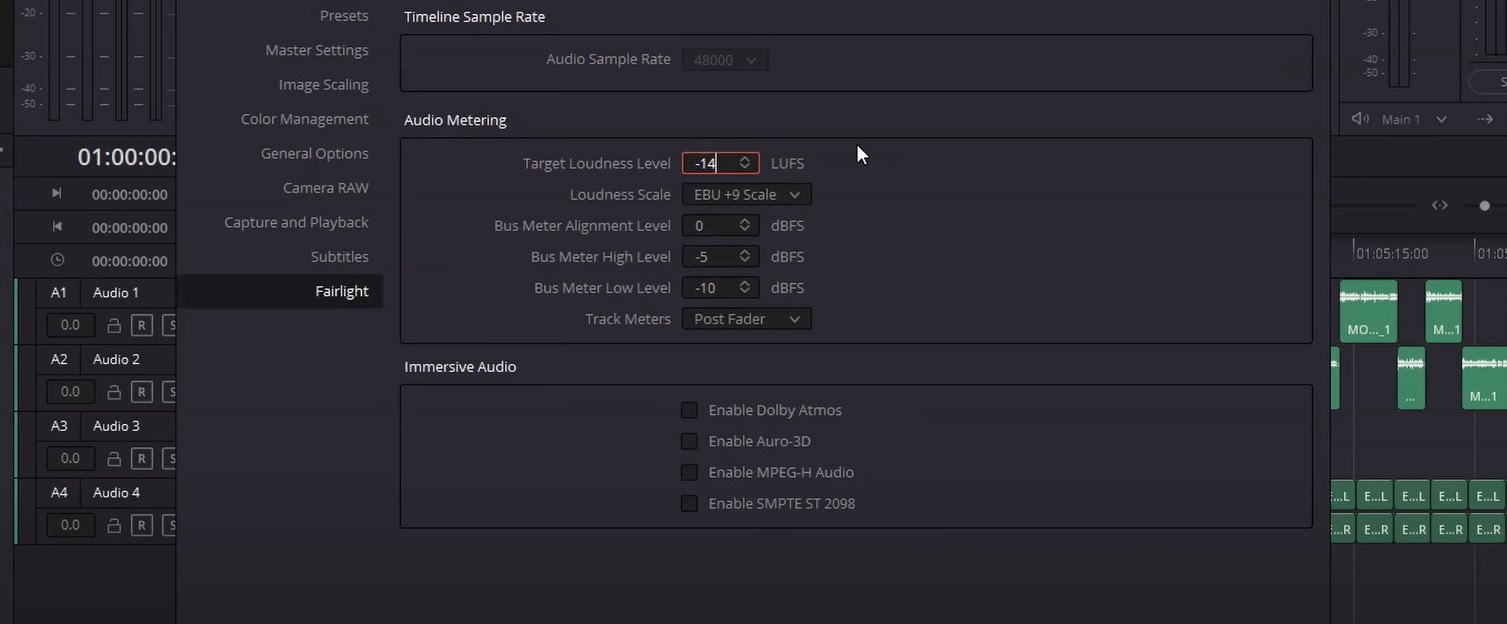
Next, you are going to head to the Fairlight page and make sure that your meters are open. the loudness meter is on the right top of the layout of the program, and it goes from +9 to -15 LUFS.

Here, zero represents exactly what our target loudness level is, in this case, as you remember, we set it to -14 LUFS. So, ensure that our loudness is as close as zero as possible on the meter, but you can also make it lower, such as -3. Whenever you play, you will be able to see that there are some numbers popping up to the right of the meter.
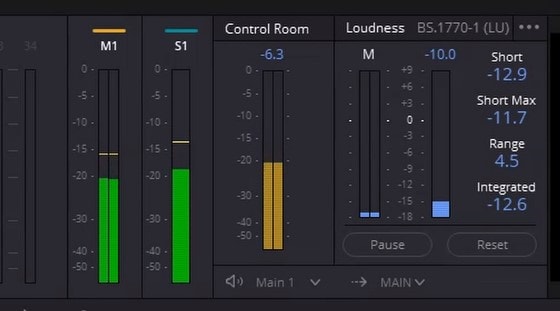
The first one, you’ll find, is Short – constantly changing, indicating how far above or below the target loudness level you are at a given time. Short Max tells you how far above or below your target loudness level the loudest point of your video is. Range is a measure of your quietest pick to your loudest peak, and the last one is Integrated – it gives you the overall loudness of your video in relation to your target loudness level. Integrated is the number we aim to keep around -3 or 0.
We can use our main slider (next to the sequence on the right) to make our video louder or quieter until we hit that target loudness level.
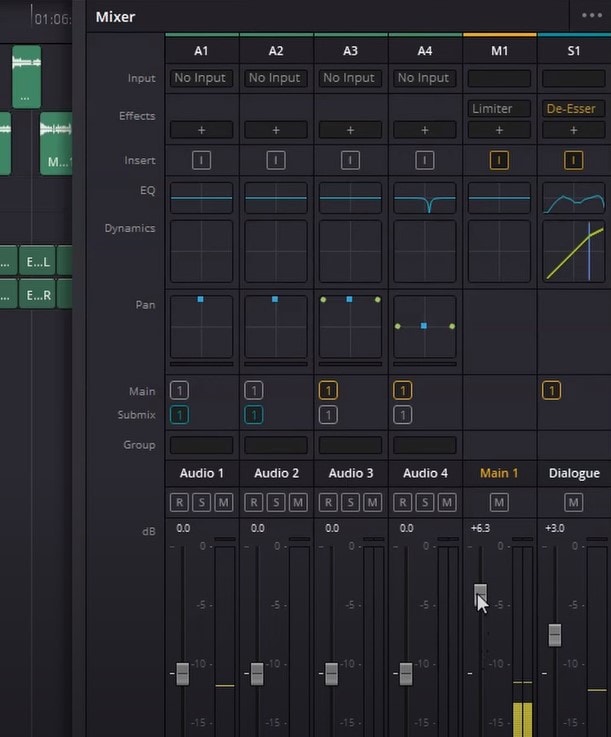
Also, there is an automation tool that can help you dial in your loudness. In order to access this feature, find a red icon, looking like a wave with kind of a key frames.
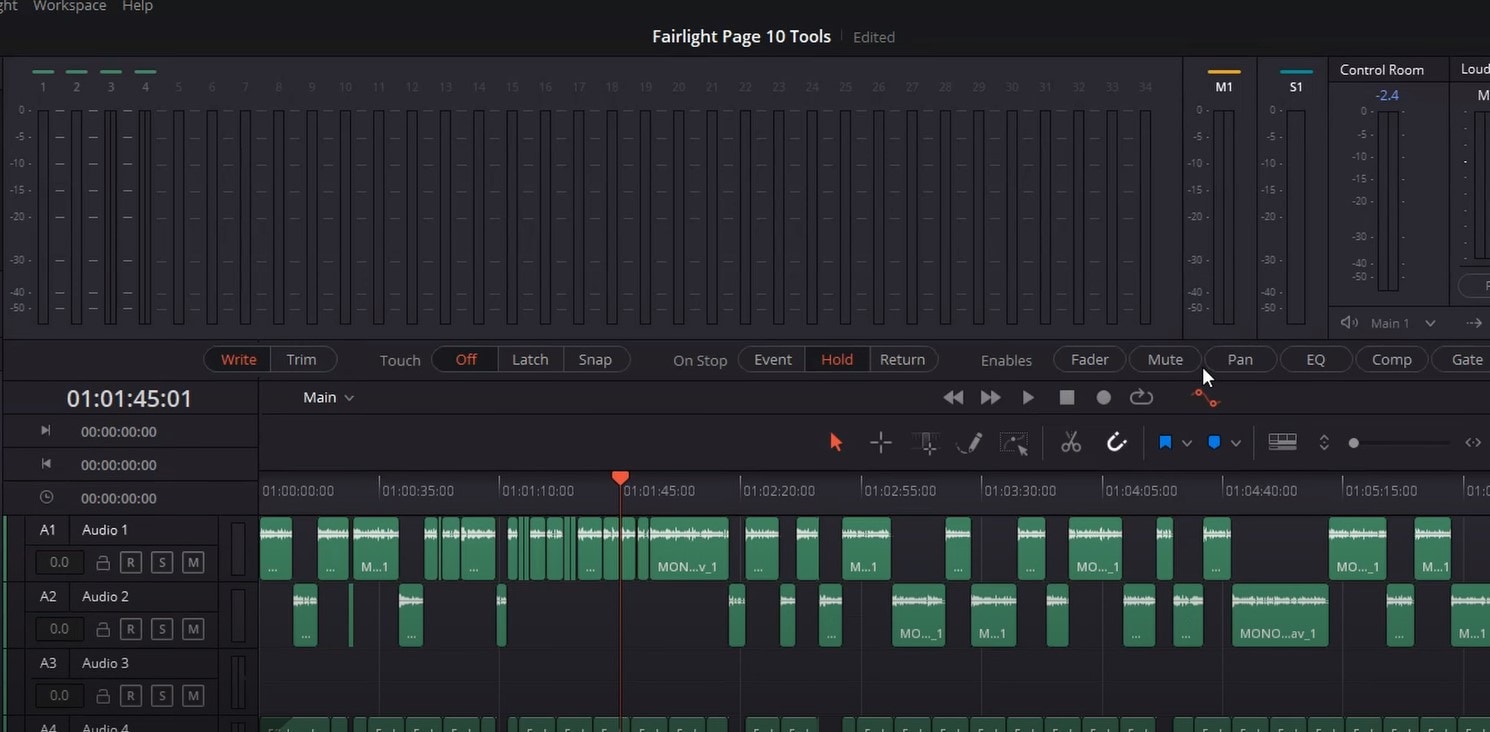
Next, open up your Index (on the far top panel, a little bit from the left), and make sure you are in the tracks menu in your editing index.

What you want to do is to make your main track visible on the timeline, so hit on the eyeball next to your main and go to your timeline, where you will expand your main track until you see your Loudness History options.
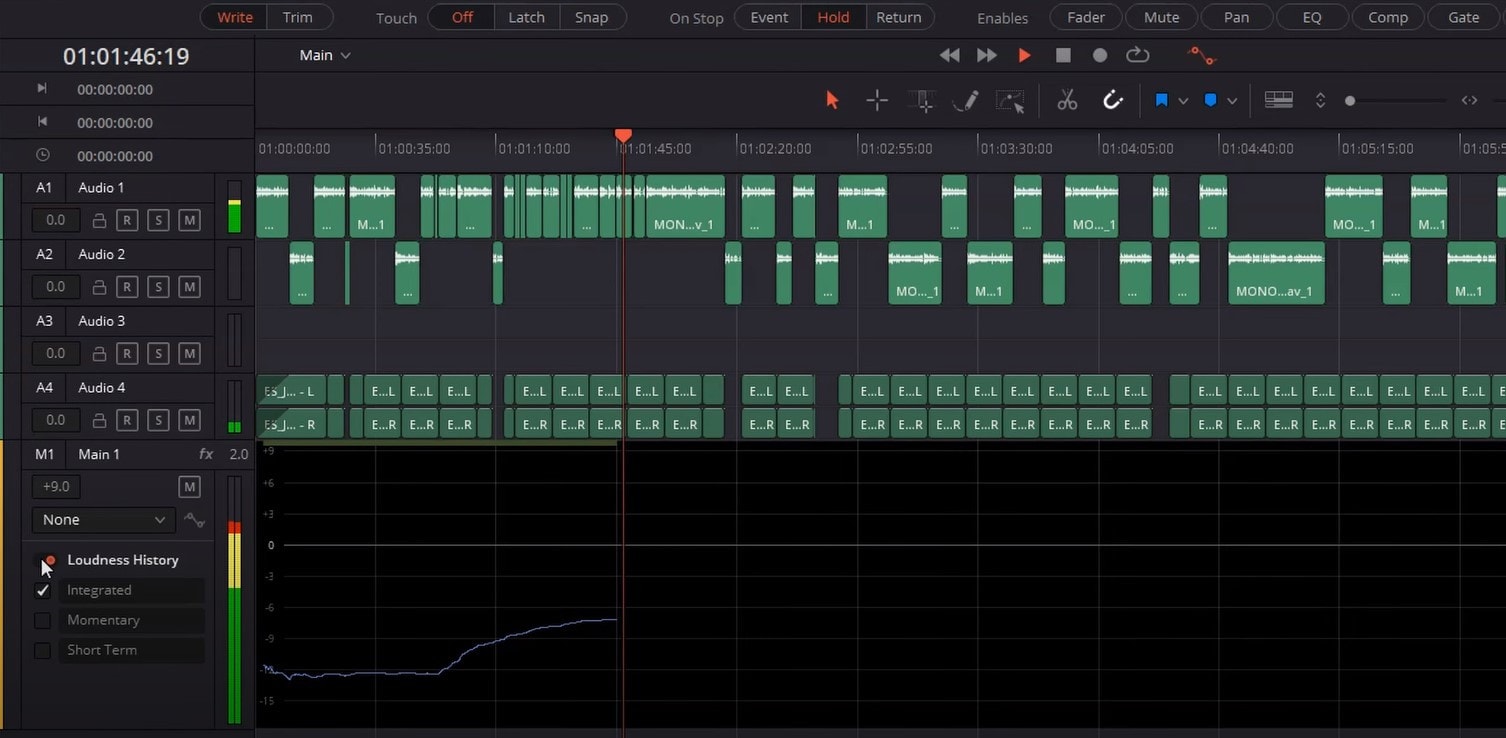
Here, you will need to check in the box next to Integrated and turn on the Loudness History. This will show the integrated loudness level, adjust your main track’s volume accordingly, so you are below the zero line. And, that’s actually it!
How to normalize audio in Wondershare Filmora X?
Even though doing this with the help of DaVinci Resolve is really helpful, and, let’s say, sophisticated, you might find it a little complicated, in case you were not so familiar with video/audio editing. So, we would like you to have some information about what alternative you can turn to, and in this case, it’s worth bringing up a software - Wondershare Filmora X . With it, you will find that the same task can be carried out wonderfully. It is also a video editor, but it is one of the easiest to use in the word, supported by Mac and Windows. Filmora offers a great, neat, user-friendly interface, and helps you understand the very basics of editing. Actually, it has not been long since Wondershare Filmora X introduced the feature to normalize the audio. So, you might want download the latest version of Filmora X and start following along the steps we are going to provide for you to understand how audio normalization works on Filmora X .
Free Download For Win 7 or later(64-bit)
Free Download For macOS 10.14 or later
After having installed and opened a software, click and drag the video of which the audio you want to normalize. Now you can select the clip you have chosen – if there are multiple, select all of them, then right-click and choose Detach Audio.
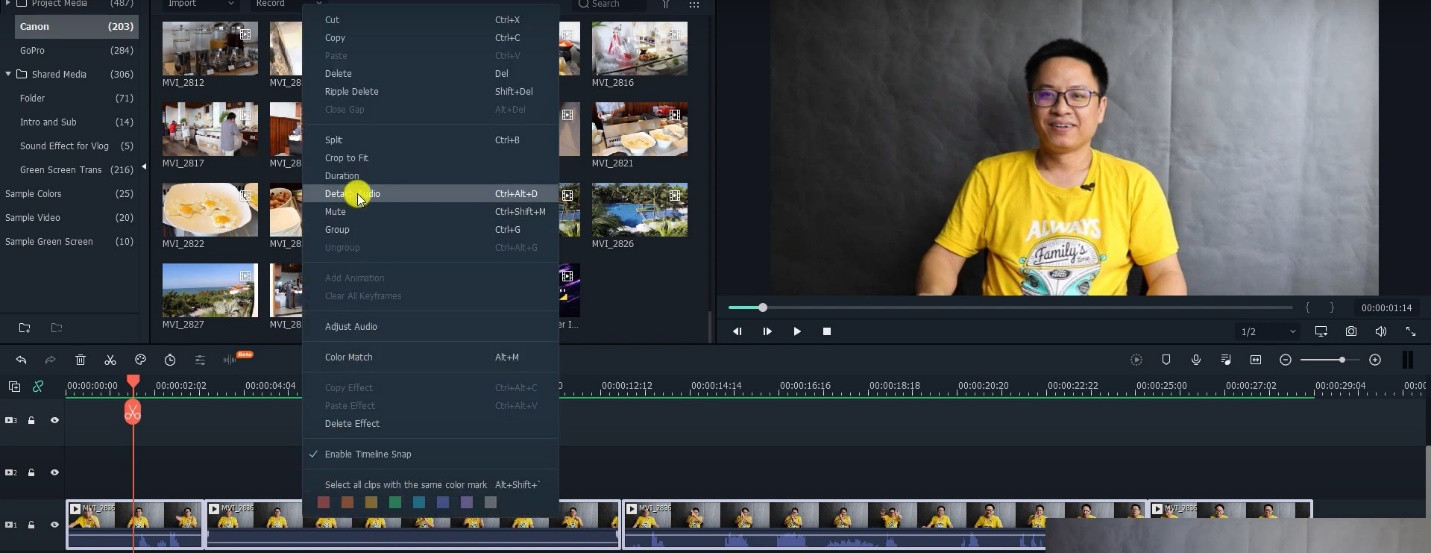
Now, you can see on the graphic that the noises are of different levels from each other. This makes us understand why we need to balance our audio files whenever we are aiming for a good listening experience for our audiences.

Select these files, right-click and choose Adjust Audio. New panel will be opened on left top and there, you will see Audio Normalization – check the box there.
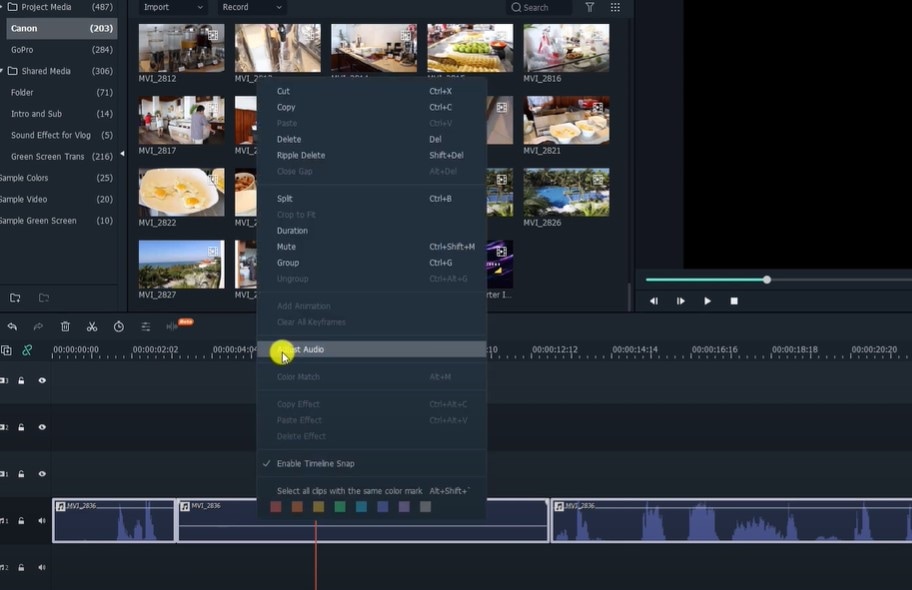
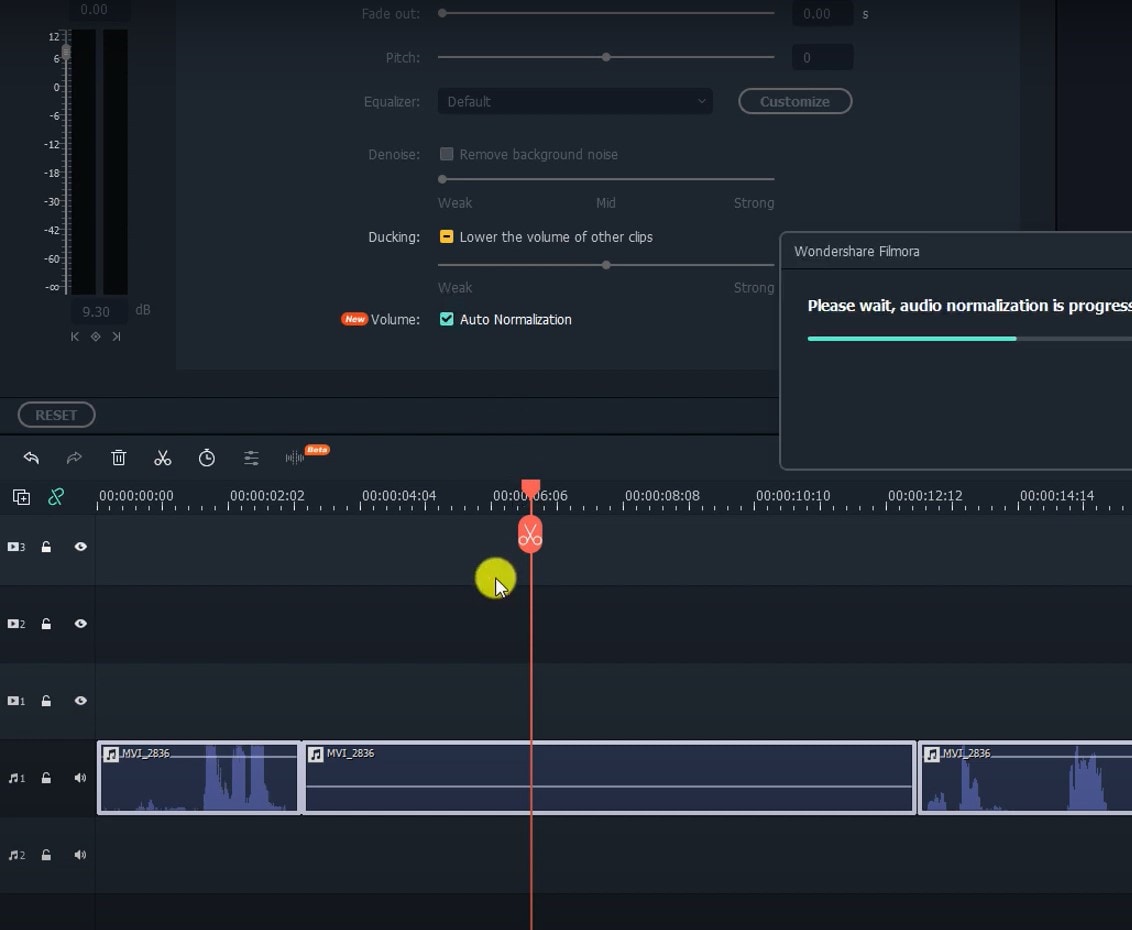
Now, after clicking on it, you can just wait and the normalization will be completed soon.

When it happens, you will be able to see on the graphics that the volumes are almost on the same level, moreover, listening to it, your ears will “understand” that there is no longer apparent difference between how they sound. So, let’s hope you are happy with the result – in this case, you can save the file you just normalized!
So, in this article, we learned one or two things about normalizing volumes and its types, why and how it is done, and how do it in DaVinci Resolve as well as in Wondershare Filmora X. we hope the guidelines will serve you in the best way and from now on, you will be able to create great sounds!
Free Download For macOS 10.14 or later
After having installed and opened a software, click and drag the video of which the audio you want to normalize. Now you can select the clip you have chosen – if there are multiple, select all of them, then right-click and choose Detach Audio.

Now, you can see on the graphic that the noises are of different levels from each other. This makes us understand why we need to balance our audio files whenever we are aiming for a good listening experience for our audiences.

Select these files, right-click and choose Adjust Audio. New panel will be opened on left top and there, you will see Audio Normalization – check the box there.


Now, after clicking on it, you can just wait and the normalization will be completed soon.

When it happens, you will be able to see on the graphics that the volumes are almost on the same level, moreover, listening to it, your ears will “understand” that there is no longer apparent difference between how they sound. So, let’s hope you are happy with the result – in this case, you can save the file you just normalized!
So, in this article, we learned one or two things about normalizing volumes and its types, why and how it is done, and how do it in DaVinci Resolve as well as in Wondershare Filmora X. we hope the guidelines will serve you in the best way and from now on, you will be able to create great sounds!
Elevating Sound Design: A Comprehensive Approach to Gradual Audio Diminishment and Magnification with Adobe After Effects
How to Fade In and Fade Out Audio in Adobe After Effects

Benjamin Arango
Mar 27, 2024• Proven solutions
Many of us get the first association when Adobe After Effects is mentioned: stunning motion graphics and breathtaking visual effects. Very few people think of audio editing when they talk about AE, even though this application offers a simple way to add Fade in and fade out effects to audio files used in soundtracks.
However, you will need to have at least basic video and sound editing skills to fade in and fade out audio files in AE since the app doesn’t offer a preset that you can drag and drop to the timeline. So, in this article, we will show how to create the Fade in and fade out effects in Adobe After Effects in just a few simple steps.
Read More to Get: Best Audio Mixer Software to Trim Your Sound Easily >>
Adding the Fade In and Fade Out Effects to Audio Files in AE
Step 1: Check audio waveform in After Effects
Once you’ve created a new project in AE and you’ve imported the audio files you’d like to include in the soundtrack of the video you’re making, you should place that audio file on the timeline. Click on the arrow located next to the audio file, then click on the Audio arrow that will be displayed under the file, and finally click on the Waveform arrow. This will enable you to see the waveform of the audio file you’d like to edit on the timeline and allow you to add Fade in and fade out effects with more precision. The file you added to your composition will be displayed as a layer in the Composition tab located in the lower-left region of the software’s interface.

Step 2: Add a keyframe to the audio file
The next thing you will have to do is place the playhead at the exact location where you want the Fade In effect to start. In most cases, Fade effects are added at the starting point of the audio file, so you should position the playhead at the beginning of the timeline or zero seconds. You will be able to see a stopwatch next to the Audio Levels option located in the Composition tab. Click on it to add the first keyframe and assign a negative value to the Audio Level setting. -100db or -50db values will make the audio file silent, and you can pick either based on how long you want the Fade in effect to last. If you don’t know how to use keyframes in After Effects, this article will give you some info .
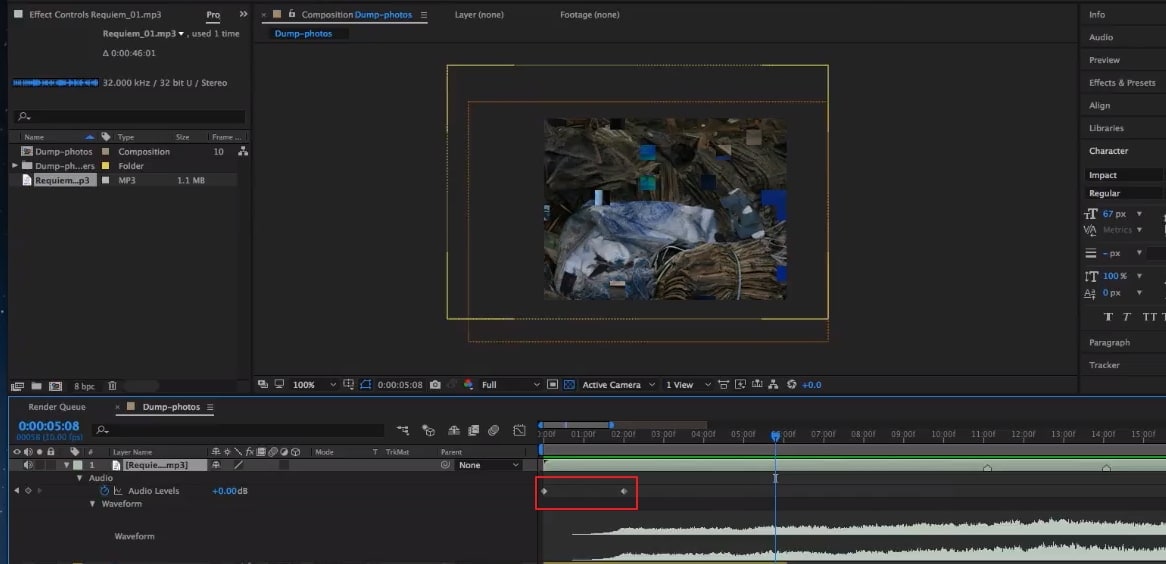
You may also like: 15 Free After Effects Templates to Power up Your Video
Step 3: Complete Fade out/in audio in After Effects
Move the playhead to the location where you want the effect to end and add another keyframe by clicking on the ‘Add or remove keyframe at current time’ icon. Set the Audio Level value to 0db, and that is it. You’ve created the Fade in effect. Keep in mind that you can use more than two keyframes to fade in audio, enabling you to increase the audio level gradually. The process of creating the Fade effect requires you to add a keyframe that has a 0db value a few seconds before the clip ends and then add another keyframe at the very end of the audio file that has -50 or -100db audio level value.

Tips For Making Better Fade In and Fade Out Effects
The process of creating a fade in or a fade out effect in AE is quite simple, but it is up to you to discover creative ways of using these effects. Here are a few tips that can help you use these audio effects more creatively.
1. Avoid Hard Cuts
A high pitch sound at the very begging of a new sequence can ruin your soundtrack and ultimately the entire video, so in case you’ve cut an audio file at the location where the sound peaks, you can apply a fade in effect to make the transition between two audio files softer.
You may also like: How to Cut Video in After Effects
2. Be Mindful of Audio Compression
Audio compression is a process that reduces loud sounds and amplifies quiet sounds, resulting from the audio file’s dynamic range being compressed. In most cases, you won’t notice the effects of audio compression, but if you compress an audio file too much, you might get some unwanted side effects if you add a fade out effect to that file. That’s why it is best to rely on the default audio compression features a video or audio editing app offers.
3. Use the Fade In and Fade Out Effects Creatively
Besides opening and closing scenes, you can also use the Fade in and fade out effects to mix two different tracks while the shot is still in progress. Fade out one track, make it look like a scene is ending, and then introduce a new theme that changes the mood of that scene. The important thing is to avoid reducing the audio level all the way to -100db because you might end up creating silence in a scene that disrupts the flow of an entire video.
Conclusion
Fading in or fading out audio files in Adobe After Effects doesn’t require much effort, as you have to add a few keyframes to the file and adjust the Audio Level value. However, finding the best way to improve the quality of your soundtrack by applying these effects may take some practice. Do you often add Fade in and fade out audio effects in AE? Leave a comment below and share your experiences with us.
If you want to fade in/out audio easily, we recommend using Filmora . It is designed for people who wish to edit professional videos with simple-to-use features. Besides Fade in/out audio in Filmora, you can automatically sync audio to video. Download it now to have a try (free)!

Benjamin Arango
Benjamin Arango is a writer and a lover of all things video.
Follow @Benjamin Arango
Benjamin Arango
Mar 27, 2024• Proven solutions
Many of us get the first association when Adobe After Effects is mentioned: stunning motion graphics and breathtaking visual effects. Very few people think of audio editing when they talk about AE, even though this application offers a simple way to add Fade in and fade out effects to audio files used in soundtracks.
However, you will need to have at least basic video and sound editing skills to fade in and fade out audio files in AE since the app doesn’t offer a preset that you can drag and drop to the timeline. So, in this article, we will show how to create the Fade in and fade out effects in Adobe After Effects in just a few simple steps.
Read More to Get: Best Audio Mixer Software to Trim Your Sound Easily >>
Adding the Fade In and Fade Out Effects to Audio Files in AE
Step 1: Check audio waveform in After Effects
Once you’ve created a new project in AE and you’ve imported the audio files you’d like to include in the soundtrack of the video you’re making, you should place that audio file on the timeline. Click on the arrow located next to the audio file, then click on the Audio arrow that will be displayed under the file, and finally click on the Waveform arrow. This will enable you to see the waveform of the audio file you’d like to edit on the timeline and allow you to add Fade in and fade out effects with more precision. The file you added to your composition will be displayed as a layer in the Composition tab located in the lower-left region of the software’s interface.

Step 2: Add a keyframe to the audio file
The next thing you will have to do is place the playhead at the exact location where you want the Fade In effect to start. In most cases, Fade effects are added at the starting point of the audio file, so you should position the playhead at the beginning of the timeline or zero seconds. You will be able to see a stopwatch next to the Audio Levels option located in the Composition tab. Click on it to add the first keyframe and assign a negative value to the Audio Level setting. -100db or -50db values will make the audio file silent, and you can pick either based on how long you want the Fade in effect to last. If you don’t know how to use keyframes in After Effects, this article will give you some info .

You may also like: 15 Free After Effects Templates to Power up Your Video
Step 3: Complete Fade out/in audio in After Effects
Move the playhead to the location where you want the effect to end and add another keyframe by clicking on the ‘Add or remove keyframe at current time’ icon. Set the Audio Level value to 0db, and that is it. You’ve created the Fade in effect. Keep in mind that you can use more than two keyframes to fade in audio, enabling you to increase the audio level gradually. The process of creating the Fade effect requires you to add a keyframe that has a 0db value a few seconds before the clip ends and then add another keyframe at the very end of the audio file that has -50 or -100db audio level value.

Tips For Making Better Fade In and Fade Out Effects
The process of creating a fade in or a fade out effect in AE is quite simple, but it is up to you to discover creative ways of using these effects. Here are a few tips that can help you use these audio effects more creatively.
1. Avoid Hard Cuts
A high pitch sound at the very begging of a new sequence can ruin your soundtrack and ultimately the entire video, so in case you’ve cut an audio file at the location where the sound peaks, you can apply a fade in effect to make the transition between two audio files softer.
You may also like: How to Cut Video in After Effects
2. Be Mindful of Audio Compression
Audio compression is a process that reduces loud sounds and amplifies quiet sounds, resulting from the audio file’s dynamic range being compressed. In most cases, you won’t notice the effects of audio compression, but if you compress an audio file too much, you might get some unwanted side effects if you add a fade out effect to that file. That’s why it is best to rely on the default audio compression features a video or audio editing app offers.
3. Use the Fade In and Fade Out Effects Creatively
Besides opening and closing scenes, you can also use the Fade in and fade out effects to mix two different tracks while the shot is still in progress. Fade out one track, make it look like a scene is ending, and then introduce a new theme that changes the mood of that scene. The important thing is to avoid reducing the audio level all the way to -100db because you might end up creating silence in a scene that disrupts the flow of an entire video.
Conclusion
Fading in or fading out audio files in Adobe After Effects doesn’t require much effort, as you have to add a few keyframes to the file and adjust the Audio Level value. However, finding the best way to improve the quality of your soundtrack by applying these effects may take some practice. Do you often add Fade in and fade out audio effects in AE? Leave a comment below and share your experiences with us.
If you want to fade in/out audio easily, we recommend using Filmora . It is designed for people who wish to edit professional videos with simple-to-use features. Besides Fade in/out audio in Filmora, you can automatically sync audio to video. Download it now to have a try (free)!

Benjamin Arango
Benjamin Arango is a writer and a lover of all things video.
Follow @Benjamin Arango
Benjamin Arango
Mar 27, 2024• Proven solutions
Many of us get the first association when Adobe After Effects is mentioned: stunning motion graphics and breathtaking visual effects. Very few people think of audio editing when they talk about AE, even though this application offers a simple way to add Fade in and fade out effects to audio files used in soundtracks.
However, you will need to have at least basic video and sound editing skills to fade in and fade out audio files in AE since the app doesn’t offer a preset that you can drag and drop to the timeline. So, in this article, we will show how to create the Fade in and fade out effects in Adobe After Effects in just a few simple steps.
Read More to Get: Best Audio Mixer Software to Trim Your Sound Easily >>
Adding the Fade In and Fade Out Effects to Audio Files in AE
Step 1: Check audio waveform in After Effects
Once you’ve created a new project in AE and you’ve imported the audio files you’d like to include in the soundtrack of the video you’re making, you should place that audio file on the timeline. Click on the arrow located next to the audio file, then click on the Audio arrow that will be displayed under the file, and finally click on the Waveform arrow. This will enable you to see the waveform of the audio file you’d like to edit on the timeline and allow you to add Fade in and fade out effects with more precision. The file you added to your composition will be displayed as a layer in the Composition tab located in the lower-left region of the software’s interface.

Step 2: Add a keyframe to the audio file
The next thing you will have to do is place the playhead at the exact location where you want the Fade In effect to start. In most cases, Fade effects are added at the starting point of the audio file, so you should position the playhead at the beginning of the timeline or zero seconds. You will be able to see a stopwatch next to the Audio Levels option located in the Composition tab. Click on it to add the first keyframe and assign a negative value to the Audio Level setting. -100db or -50db values will make the audio file silent, and you can pick either based on how long you want the Fade in effect to last. If you don’t know how to use keyframes in After Effects, this article will give you some info .

You may also like: 15 Free After Effects Templates to Power up Your Video
Step 3: Complete Fade out/in audio in After Effects
Move the playhead to the location where you want the effect to end and add another keyframe by clicking on the ‘Add or remove keyframe at current time’ icon. Set the Audio Level value to 0db, and that is it. You’ve created the Fade in effect. Keep in mind that you can use more than two keyframes to fade in audio, enabling you to increase the audio level gradually. The process of creating the Fade effect requires you to add a keyframe that has a 0db value a few seconds before the clip ends and then add another keyframe at the very end of the audio file that has -50 or -100db audio level value.

Tips For Making Better Fade In and Fade Out Effects
The process of creating a fade in or a fade out effect in AE is quite simple, but it is up to you to discover creative ways of using these effects. Here are a few tips that can help you use these audio effects more creatively.
1. Avoid Hard Cuts
A high pitch sound at the very begging of a new sequence can ruin your soundtrack and ultimately the entire video, so in case you’ve cut an audio file at the location where the sound peaks, you can apply a fade in effect to make the transition between two audio files softer.
You may also like: How to Cut Video in After Effects
2. Be Mindful of Audio Compression
Audio compression is a process that reduces loud sounds and amplifies quiet sounds, resulting from the audio file’s dynamic range being compressed. In most cases, you won’t notice the effects of audio compression, but if you compress an audio file too much, you might get some unwanted side effects if you add a fade out effect to that file. That’s why it is best to rely on the default audio compression features a video or audio editing app offers.
3. Use the Fade In and Fade Out Effects Creatively
Besides opening and closing scenes, you can also use the Fade in and fade out effects to mix two different tracks while the shot is still in progress. Fade out one track, make it look like a scene is ending, and then introduce a new theme that changes the mood of that scene. The important thing is to avoid reducing the audio level all the way to -100db because you might end up creating silence in a scene that disrupts the flow of an entire video.
Conclusion
Fading in or fading out audio files in Adobe After Effects doesn’t require much effort, as you have to add a few keyframes to the file and adjust the Audio Level value. However, finding the best way to improve the quality of your soundtrack by applying these effects may take some practice. Do you often add Fade in and fade out audio effects in AE? Leave a comment below and share your experiences with us.
If you want to fade in/out audio easily, we recommend using Filmora . It is designed for people who wish to edit professional videos with simple-to-use features. Besides Fade in/out audio in Filmora, you can automatically sync audio to video. Download it now to have a try (free)!

Benjamin Arango
Benjamin Arango is a writer and a lover of all things video.
Follow @Benjamin Arango
Benjamin Arango
Mar 27, 2024• Proven solutions
Many of us get the first association when Adobe After Effects is mentioned: stunning motion graphics and breathtaking visual effects. Very few people think of audio editing when they talk about AE, even though this application offers a simple way to add Fade in and fade out effects to audio files used in soundtracks.
However, you will need to have at least basic video and sound editing skills to fade in and fade out audio files in AE since the app doesn’t offer a preset that you can drag and drop to the timeline. So, in this article, we will show how to create the Fade in and fade out effects in Adobe After Effects in just a few simple steps.
Read More to Get: Best Audio Mixer Software to Trim Your Sound Easily >>
Adding the Fade In and Fade Out Effects to Audio Files in AE
Step 1: Check audio waveform in After Effects
Once you’ve created a new project in AE and you’ve imported the audio files you’d like to include in the soundtrack of the video you’re making, you should place that audio file on the timeline. Click on the arrow located next to the audio file, then click on the Audio arrow that will be displayed under the file, and finally click on the Waveform arrow. This will enable you to see the waveform of the audio file you’d like to edit on the timeline and allow you to add Fade in and fade out effects with more precision. The file you added to your composition will be displayed as a layer in the Composition tab located in the lower-left region of the software’s interface.

Step 2: Add a keyframe to the audio file
The next thing you will have to do is place the playhead at the exact location where you want the Fade In effect to start. In most cases, Fade effects are added at the starting point of the audio file, so you should position the playhead at the beginning of the timeline or zero seconds. You will be able to see a stopwatch next to the Audio Levels option located in the Composition tab. Click on it to add the first keyframe and assign a negative value to the Audio Level setting. -100db or -50db values will make the audio file silent, and you can pick either based on how long you want the Fade in effect to last. If you don’t know how to use keyframes in After Effects, this article will give you some info .

You may also like: 15 Free After Effects Templates to Power up Your Video
Step 3: Complete Fade out/in audio in After Effects
Move the playhead to the location where you want the effect to end and add another keyframe by clicking on the ‘Add or remove keyframe at current time’ icon. Set the Audio Level value to 0db, and that is it. You’ve created the Fade in effect. Keep in mind that you can use more than two keyframes to fade in audio, enabling you to increase the audio level gradually. The process of creating the Fade effect requires you to add a keyframe that has a 0db value a few seconds before the clip ends and then add another keyframe at the very end of the audio file that has -50 or -100db audio level value.

Tips For Making Better Fade In and Fade Out Effects
The process of creating a fade in or a fade out effect in AE is quite simple, but it is up to you to discover creative ways of using these effects. Here are a few tips that can help you use these audio effects more creatively.
1. Avoid Hard Cuts
A high pitch sound at the very begging of a new sequence can ruin your soundtrack and ultimately the entire video, so in case you’ve cut an audio file at the location where the sound peaks, you can apply a fade in effect to make the transition between two audio files softer.
You may also like: How to Cut Video in After Effects
2. Be Mindful of Audio Compression
Audio compression is a process that reduces loud sounds and amplifies quiet sounds, resulting from the audio file’s dynamic range being compressed. In most cases, you won’t notice the effects of audio compression, but if you compress an audio file too much, you might get some unwanted side effects if you add a fade out effect to that file. That’s why it is best to rely on the default audio compression features a video or audio editing app offers.
3. Use the Fade In and Fade Out Effects Creatively
Besides opening and closing scenes, you can also use the Fade in and fade out effects to mix two different tracks while the shot is still in progress. Fade out one track, make it look like a scene is ending, and then introduce a new theme that changes the mood of that scene. The important thing is to avoid reducing the audio level all the way to -100db because you might end up creating silence in a scene that disrupts the flow of an entire video.
Conclusion
Fading in or fading out audio files in Adobe After Effects doesn’t require much effort, as you have to add a few keyframes to the file and adjust the Audio Level value. However, finding the best way to improve the quality of your soundtrack by applying these effects may take some practice. Do you often add Fade in and fade out audio effects in AE? Leave a comment below and share your experiences with us.
If you want to fade in/out audio easily, we recommend using Filmora . It is designed for people who wish to edit professional videos with simple-to-use features. Besides Fade in/out audio in Filmora, you can automatically sync audio to video. Download it now to have a try (free)!

Benjamin Arango
Benjamin Arango is a writer and a lover of all things video.
Follow @Benjamin Arango
Also read:
- [Updated] 2024 Approved Channel Command Center Masterminding Visionary Content
- [Updated] 2024 Approved FIFA Highlights & Trends Charting on YouTube
- [Updated] Vids for Cash A Compreomed Analysis of Monetization Plays for 2024
- 8 Solutions to Fix Find My Friends Location Not Available On Motorola Edge 40 Neo | Dr.fone
- Accessing Accelerated Troubleshooting in W11 Interface
- Dazzle with Directors' Lighting Tips for Captivating Clips
- Downloading the Most Recent Logitech G910 Driver Package for Your Windows System
- In 2024, Harmonizing Media Effective Techniques to Combine Multiple Audio Files in Videos
- In 2024, How to Find iSpoofer Pro Activation Key On Vivo X Fold 2? | Dr.fone
- In 2024, Set Your Preferred Job Location on LinkedIn App of your Xiaomi Civi 3 Disney 100th Anniversary Edition | Dr.fone
- Mastering Tempo Adjustments Aligning Audio and Visuals in FCPX for 2024
- New 2024 Approved The Art of Infusing Audio Harmonies with Visual Narratives at Zero Expense
- New Audio Frequencies to Textual Formats An In-Depth Look at Current Online MP3 Transcription Methods
- New Innovations in Digital Vocal Alteration Top-Notch Applications
- New Mastering Gaming The 8 Best Sound Effects Available Without a Price Tag
- New Mastering the Basics Essential Podcast Editing Tips for Novices for 2024
- Title: Navigating the Nuances of Audio Graphics Plotting Waveform Data & Infusing Videos with Life-Like Animations Using Premiere Pro
- Author: Paul
- Created at : 2024-10-22 02:51:03
- Updated at : 2024-10-23 17:32:11
- Link: https://voice-adjusting.techidaily.com/navigating-the-nuances-of-audio-graphics-plotting-waveform-data-and-infusing-videos-with-life-like-animations-using-premiere-pro/
- License: This work is licensed under CC BY-NC-SA 4.0.